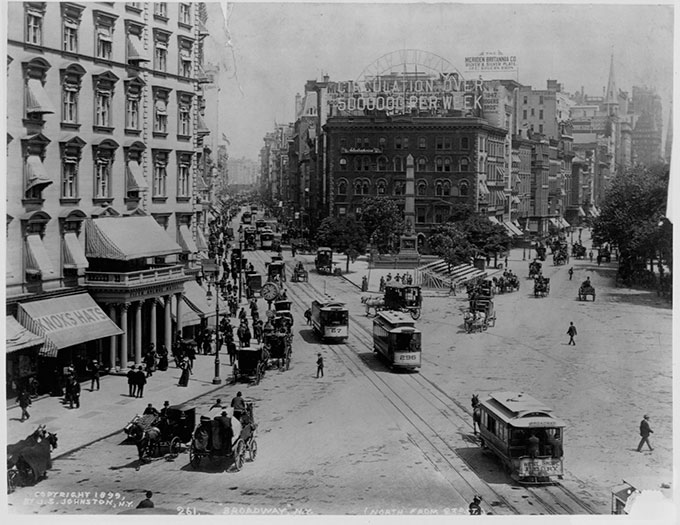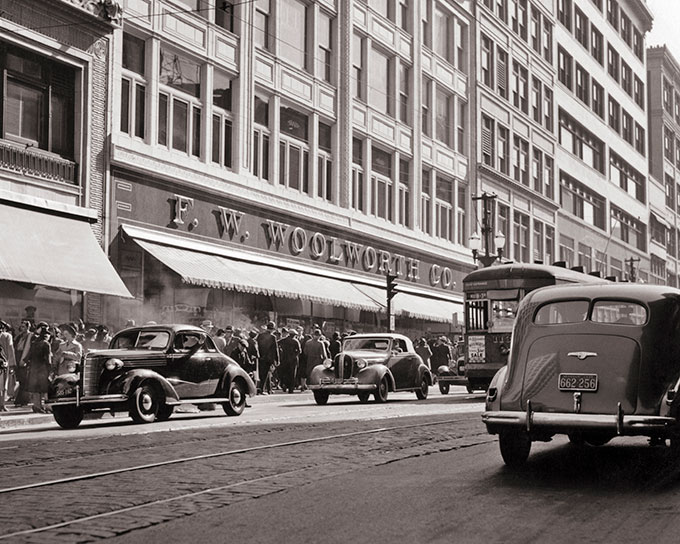In 1985, Kenneth T. Jackson published Crabgrass Frontier: The Suburbanization of the United States, a landmark of American urban history and winner of the Bancroft Prize. Jackson got some particulars wrong, like his assumption that cheap oil was running out, and that America would consequently re-densify. But his central thesis still resonates: transportation technology is the primary determining factor in the physical form of human settlement.
For most of history, the form of human settlements was determined by how far we could travel on foot or horseback. Industrialization changed everything. First trains, then streetcars, and then automobiles reshaped the built environment by enabling faster movement. Forty years after Crabgrass Frontier’s debut, a new technology—the autonomous vehicle—is poised to reshape human settlements once again.
Finally, a reason to check your email.
Sign up for our free newsletter today.
Autonomous vehicles (AVs) are now familiar to most Americans. Many cars already feature automated functions, such as lane-keeping and adaptive cruise control. Fully autonomous rides are even available in select cities through services like Waymo.
More than 3 million Teslas installed with the company’s “Full Self-Driving” technology are on American roads. In June, a Tesla Model Y delivered itself from a factory in Texas to its new owner’s home.
For motorists, the core appeal of AVs is the promise of freeing up time in the car. Mobile phones have allowed some driving time to be filled with business calls, but the demands of the road still limit productivity. With continued advances, an AV owner should soon be able to use a laptop in the car much as on a train.
Because time in the car will no longer be time wasted, AVs are likely to expand the suburban frontier. New exurban and rural land will be brought within the redrawn commuter-shed.
Some argue that Americans will be reluctant to give up driving, but history suggests otherwise. As Crabgrass Frontier shows, at every stage of technological change, the United States has been the earliest adopter of transportation improvements.
In the mid-nineteenth century, the railroad allowed for the creation of the first true suburbs. Trains more than doubled the speed of horse-drawn carriages, making it possible to separate work from home. By the 1850s, towns like West Cambridge, Massachusetts, were marketing themselves as offering a quiet life with an easy train commute to Boston. By the late nineteenth century, genteel towns such as Brookline, Massachusetts; Bronxville, New York; and Swarthmore, Pennsylvania, embodied the upper-middle-class aspiration for country living with city money.
Railroads did not create sprawling metros but rather linked old and new towns to the city. The technology of the steam engine enabled speed but not rapid acceleration and deceleration, so towns remained discrete, and life within them was still based mostly on movement by foot. Philadelphia’s Main Line suburbs are the archetypical example.
Even as railroads pushed suburbs far beyond urban cores, electric streetcars, horse-drawn rail cars, and cable cars transformed life within cities. By century’s end, electric streetcars had won out.
Debuting in 1888 in Richmond, Virginia, Frank Sprague’s electric streetcar system—soon nicknamed the trolley—spread with extraordinary speed across the Eastern Seaboard, Midwest, and Pacific Coast. By the turn of the twentieth century, the streetcar was, as Jackson writes, “a ubiquitous and commonplace feature” of American city life.
With its urban spaces still young and fluid, America embraced the technology far faster than Europe. By 1900, New York had built more than 1,300 miles of streetcar track and carried more riders than London, Paris, Berlin, and Vienna combined. Brooklyn, as the original full name of its baseball team—the “Trolley Dodgers”—attests, was the quintessential streetcar city: dense, dynamic, and expanding like a spiderweb from the East River to Coney Island.

The automobile, which went into mass production in the 1910s, would end the electric streetcar’s urban reign within 40 years. Along with the asphalt roads it demanded, the automobile dissolved the boundaries between city, suburb, and country.
Before the car, Jackson explains, real estate values were defined by walking distance from fixed transportation corridors. If an area lay beyond a certain distance from a station (he cites one mile from the railroad and half a mile from the trolley), it was effectively out-of-bounds for residential development. The car opened land for settlement previously considered too remote. “Interstitial” areas, as Jackson calls them—areas between existing settlements—were soon filled in.
Jackson argues that transportation technology is the primary force shaping our settlements, but he also shows that its spread depends on sufficient wealth and a culture and politics open to it. After World War II, all these conditions converged, allowing the automobile to become America’s dominant mode of transportation. In 1950, only 60 percent of households owned cars; by the time Jackson wrote Crabgrass Frontier in the 1980s, that figure had risen above 85 percent. Between those decades, the interstate highway system and the car-dependent suburb became integral to the American way of life.
Benefiting greatly from both the railroad and the electric streetcar, cities have had a more mixed experience with the automobile. In the auto’s first half century, households and policymakers embraced it not only as a convenient technology but also as conferring the stamp of social ascent. Even in New York City, the landscape was totally reconfigured for car traffic. Though many now remember Robert Moses as the man who remade the city in the car’s image in the 1950s, as early as the 1930s, Mayor Fiorello La Guardia considered the automobile “the best of modern civilization” and the electric streetcar “an old-fashioned obstacle to progress,” notes Jackson.
Some early detractors, including social thinker Lewis Mumford, raised objections to cars in an urban context—he called them “antithetical to the very meaning of the city.” Grassroots activists revolted against cars in the sixties and seventies; the New Urbanism movement emerged in the nineties. But it wasn’t until the twenty-first century that reckoning with the consequences of car dominance went mainstream.

How, then, should cities prepare for the coming age of the autonomous vehicle? Though identical in form to traditional cars, AVs differ in critical ways. One major question is what happens when the vehicles aren’t in use. If the cost of parking in a city exceeds the cost of fueling and sending them home—or even having them circle the block—streets could become clogged with empty, rolling cars.
Another concern, paradoxically, is that AVs’ pedestrian-conscious programming could cause traffic snarls of its own. Today, people step into streets knowing a reckless or inattentive human driver could kill them. AVs, by contrast, are better at scanning for danger and stopping immediately. That might embolden pedestrians to cross at will, disregarding right-of-way. Tipping the balance too far toward pedestrians could leave streets impassable for cars, buses, and even emergency vehicles during peak foot traffic.
For the first time in a century, a transportation paradigm shift is underway. The lesson of Kenneth T. Jackson’s Crabgrass Frontier is that mass adoption will probably come faster than anyone expects. Like the car itself, the autonomous vehicle will go from novelty to luxury to necessity in our lifetimes. Cities better buckle up.
Top Photo by Smith Collection/Gado/Getty Images
Source link


















